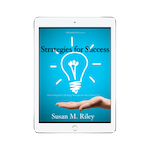SPRINT 1, LESSON 2
Arts Integration Strategies
Video play time: 15:38
Arts integration strategies are the first step towards opening the door to arts integration lessons. So in this lesson, I’m going to share with you some of the strategies I use for instant success each and every time.
- Strategies in all arts areas which can be scaffolded in complexity for both the learners and the teacher.
- How to introduce the strategies effectively to others.
- The commonalities and differences between the arts areas
- And how to make connections between arts strategies and core concepts.






Reflection:
I learned from the overview that the beginning stage of first enhancement of the arts are stepping stones and how arts integration will bring a fuller insight of improving learning.
Love openning class with a “do now” strategy as ice breakers and hook to get my 3rd – 5th g. Elem Art students to transitionfrom hallway to Art Room. They rush to get into their space and hear challenge. I enjoy PD workshops that do activities strategies too. Prepares me for what is to come in the session. Strategies keep the content lesson moving and make connections. Thanks for the Common vocabulary strategy. We truly do share Common Language…. and using this will bring familiarity to students. If we acknowledge the Common Language and threads of our content areas… we can also make students see it and feel comfortable to engage and learn.
eleizabeth can you share your “do now” strategy. I work for a private special needs school for students with multiple disabilities. currently i introduce the lesson by reading or showing students images or stories that connect to the lesson before we get into the art making and process i usually start with what i can hand warm-ups and or hand yoga to move and get ready to work. You strategy might be a way to hook my students into the lesson. sounds interesting.
The introduced strategies will be wonderful tools, I think. As music is my discipline I cannot really speak to what teacher of other disciplines may think, but I understood the concepts, saw at once how they could be touchstones for integration and appelaig to students. The thing that I found most useful from this lesson is the Common Vocabulary handout. The light bulb went off over my head when I saw it. Not only was it clear, it made access points to and between Arts and other disciplines more accessible to me, as an Arts teacher. I like the strategies presented, but I think this tool and the way it was presented is more like a “teach someone how to fish” tool. Finally, I like that the strategies were used and introduced as a tool. I see how they can be a great way to grow interest and fuel the “start slow to go fast” mindset.
The strategies given here will be great starting off points for us all. Lots of great articles for reading too. I really am interested in how AI helps our low income minority students.
Oh Rhonda! AI is an amazing approach for low income and minority students. We can give those students experiences through the arts that build their background knowledge in ways they will never be able to access without it. I look forward to exploring this more with you throughout the program! THIS is something I am PASSIONATE about!
My Reflections
This sprit has help me to further understand that the process is truly more important then the product.
I love the strategies that were provided and I understand the importance of starting small and then adding more as time goes on. Setting up as a studio space for students to discover new strategies is an excellent idea.
I believe that adding the strategies to your practice makes learning more exciting and allows the students to think and problem solve more.
Great Joelle! I had a poster in my classroom that said Process > Product. It was there to remind me and the students.
Great idea, Amanda!!!
I like the idea of starting out with low risk strategies to get people interested and curious about what they are learning. I also like the fact that I can use these today if I wanted to. I think they are a great starting point for teachers to try out as well if they are just starting AI. I will need to revisit the bonus materials to get more strategies!
Keeping strategies simple and low risk are perfect for teachers new to arts integration!
Harvard’s Project Zero has invaluable resources. Keeping them on hand for students to explore routinely, they are able to select those they are interested in depending on the concepts under investigation, completing them independently or with peers. Copies of these, together with recorded dialogue (verbal and visual) contributes toward each documentation of learning for an individual student while often uncovering complex connections or possible misconceptions that may otherwise go unnoticed. Each strategy is modeled repreatedly and reflected upon until students begin to take ownership of and see the worth in each. Over multiple years, students become empowered by observing their developments, both in attitude and aptitude, and also see the connections between academic areas with greater fluidity.
I like the idea of the actor’s toolbox. Breaking down the acting into different parts and having the students pull one out when needed. This makes it manageable for the teacher and the students when using their tool box. It also has a defined start and end for using them. I can’t wait to use this next year!
Absolutely Shelly! I love how it is a very manageable strategy too! Let us know how it goes when you use it in your classroom.
I like using drama and role playing strategies as a warm-up. I like how the arts strategies.can be simple and yet student engaging.
I am always looking for different ideas.
Yes to new and different ideas! It keeps it fresh for you and the students.
I really liked the strategies. I think it’s natural to want to dive in and do too much, but this lesson really emphasized that it’s okay and even recommended to start slow. I also liked seeing the strategies outside of visual art and realizing how I can incorporate them into my art class.
I like the reminder to start slow to go fast. I also like the idea to ask questions and assess comfort level (not assuming because I’m comfortable with something others will be) before introducing strategies. Setting up the space like a studio seems cool to me. I have found that the kids enjoy when we transform the classroom every now and then. Hopefully this would work for the adults as well. I love creating a vibe!
Focusing on the process first will allow the product to take care of itself! Yes!! I totally agree with this statement! Time is always a big issue! I hear it all the time, rushing through the process. Do you believe the approach of focusing on the process first helps a bit with some time issues?